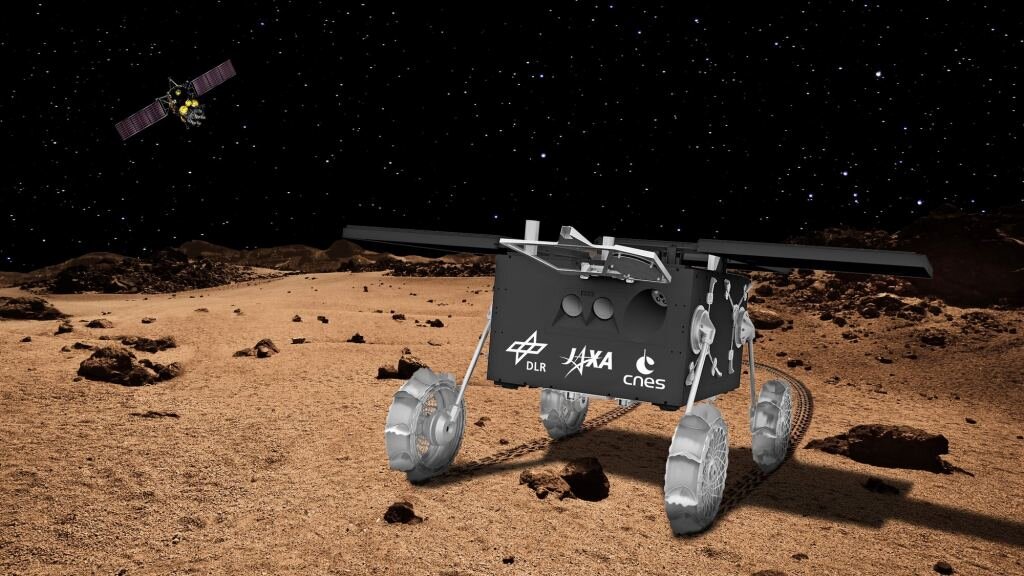The space agencies of the three states have signed an agreement to work on the Martian Moons eXploration (MMX) mission. It involves exploring the moons of Mars – Phobos and Deimos, and even landing a rover on the larger of them.

Phobos and Deimos Research
There are now a considerable number of spacecraft around Mars and directly on it, which are studying it from all sides. The only practically unexplored place remains two moons of the planet: Phobos and Deimos. Their origin remains a mystery to astronomers.
However, all this may change soon. Last week, during the Paris Air Show, which was held in Le Bourget, representatives of the space agencies of the three leading countries signed an agreement to begin preparing for the Martian Moons eXploration (MMX) mission. The German DLR, the French CNES and the Japanese JAXA have agreed to prepare a mission that will explore the moons of Mars.
The MMX will consist of three main modules: a propulsion module, a research module, and a capsule for returning samples to Earth. It is expected that the mission will start in 2024, and at the end of the decade will reach its goal.
Mission Details
The MMX propulsion module will perform exclusively the function of delivering the remaining vehicles to Mars and returning to Earth. The research module and the sample return capsule will be attached to it. It is expected that after the mission reaches the red planet, it will explore Phobos and Deimos remotely for some time.
After that, the spacecraft will approach Phobos at a distance of 40 to 100 meters and a research module and a capsule will separate from it to return samples that will make a soft landing on the surface. On the first of these spacecraft, in addition to its own measuring instruments, a small rover will be located to explore this celestial body.
Officially, it is now called IDEFIX, although during the flight it will be called “Phobos”. It has already been built, and was presented at the Air Show. The developers are DLR and CNES. However, in the next few months, it still has to undergo a number of tests in order for scientists to make sure that it works properly.
How is Phobos formed?
Directly during the MMX mission, the rover will be the main star. It will travel on the surface and Phobos will become only the third celestial body after the Moon and Mars, where something similar happens. However, scientists are paying much more attention to the capsule for returning samples to Earth.
It is not yet known when the capsule will reach the laboratory, but everyone is waiting for it. The main question that everyone wants to know the answer to is: did the moons of Mars form together with it, or are they asteroids that it captured later.
In the first case, researchers will immediately see how the samples from Phobos are similar in composition to the surface of Mars. In the second, they will more resemble what Hayabusa-2 brought from Ryugu.
According to phys.org
Follow us on Twitter to get the most interesting space news in time
https://twitter.com/ust_magazine
